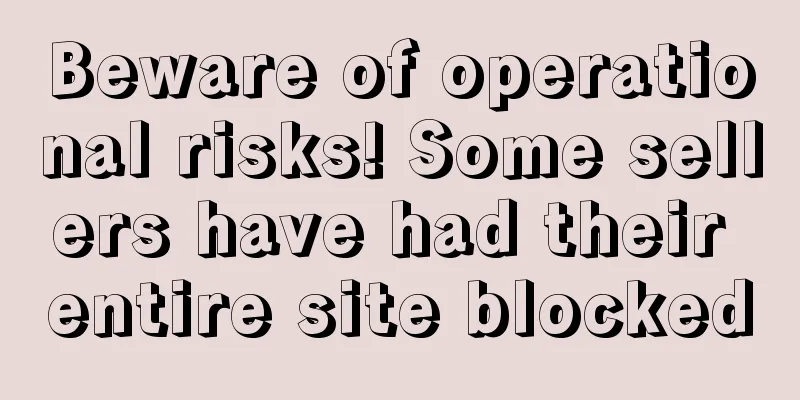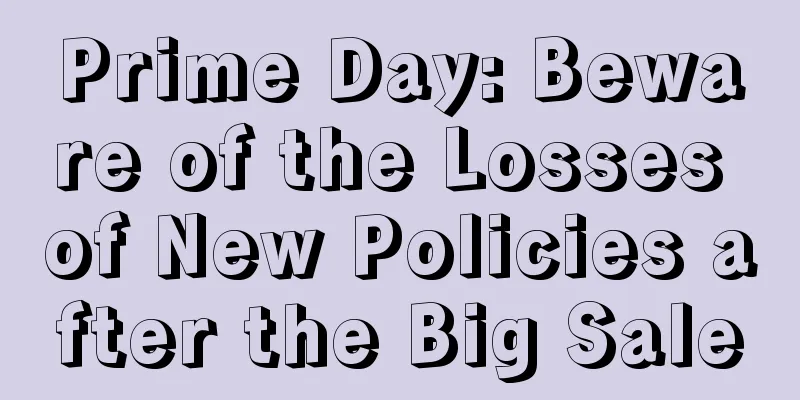Amazon's new policy is about to be implemented! It concerns store safety!

|
Yesterday, Amazon reminded sellers in the background that the new version of the communication guidelines policy will be officially implemented on November 3, which includes quite a few changes to the rules regarding communication between sellers and buyers, including updates to the types and styles of messages allowed to be sent, which will apply to all sellers. Moreover, Amazon updated the new version of the communication guidelines yesterday. I took a quick look at the latest policy details. Generally speaking, the biggest change in this new version of the communication guidelines is that sellers are prohibited from asking buyers to cancel orders due to out-of-stock conditions. The new version of the communication guide stipulates that when the seller cannot deliver the product for the order due to out of stock or other reasons, the seller should use "No Inventory" or "Could Not Ship" as the reason to adjust the order. Then select "Problem with Order" to contact the buyer and confirm the order cannot be delivered . The contact content must include detailed information of the order. If the seller believes that the order can be completed, but needs to be sent out later than the delivery time specified by Amazon, the seller needs to explain the reason for the delay and the estimated arrival time in the email. It is up to the buyer to decide whether to cancel the order. If the seller decides to cancel the order, the seller needs to take the initiative to initiate the cancellation and refund process . And the new version of the guide clearly states: it is not allowed to contact the buyer to ask the buyer to initiate a cancellation application due to reasons such as out of stock! In fact, when it is impossible to ship the goods within the specified time limit, sending a letter to the buyer to cancel the order is a very common operation, because if the seller cancels the order before shipment, it will be recorded in the store performance. There is a special item in the performance that measures "cancellation rate before shipment" to count this situation. Like the late shipment rate, it is also considered the order defect rate. If it exceeds the target value, a warning will be issued on the store homepage, and there is a risk of freezing the store. If the customer initiates the cancellation request, the seller will not be credited to the performance if he cancels the order. Therefore, in order to avoid the cancellation before delivery being credited to the performance, the seller will choose to contact the customer to ask them to initiate the cancellation. This operation is quite common, and it can be said that almost every seller has used it. However, after November 3, such operations will be captured as violations of the communication guidelines, and the store may be removed from the sales rights if caught, just like emailing to request reviews. So after this update, when sellers need to cancel orders, can they follow this regulation?
Several loopholes in the new regulations There are still many key things missing in the new regulations. For example, if the seller contacts the customer about delayed delivery and the customer agrees but still delivers the order outside the delivery period specified by Amazon, will this be included in the late shipment rate? Because for some sellers who don’t have many self-delivery orders, the late delivery performance of one order may exceed the standard. If the sales rights are removed for this reason, it is better not to ship the order. If the seller decides not to ship the goods, there is another more critical issue. If the seller cannot ship the goods due to insufficient inventory and the customer is contacted and the customer expresses understanding and agrees to cancel the order, will the seller's cancellation be counted in the cancellation rate? The seller is helpless and the buyer cannot understand that the goods are not available. If the seller cancels the order, it will be fine. However, Amazon has intervened and counted the seller's performance, and the seller may even lose the right to sell. The seller is really suffering. So the most important thing that everyone is concerned about in the new version is whether the operation according to the regulations will be counted in the pre-shipment cancellation rate. This point is also discussed on the US seller forum. After all, the cancellation rate is related to the safety of the store. If it is counted in the cancellation rate, then you can't operate according to the new version. After the new regulations are implemented, it is very important to promptly count the available quantity and remove out-of-stock products in order to prevent the situation of being unable to ship. Sellers also need to pay attention to some related words related to order cancellation when communicating with customers, such as "cancel", "refund", etc. These words may be captured as illegal contact with buyers after the new policy and the sales rights may be removed. There is currently a lot of opposition to the new policy, and Amazon may make some changes before it is officially implemented. The implementation date of November 3 is not far away. If Amazon updates this policy, I will remind everyone in time. |
<<: Big scandal of fake orders? Amazon has the most fake reviews in history!
Recommend
The wind has become "sealed"! The two e-commerce giants are growing slowly, who will be the next top streamer?
As we enter 2022, the cross-border circle is still...
Big sale out of stock warning! Many Amazon warehouses are seriously overstocked
It is learned that the Eastern Longshoremen's ...
What is DealNews? DealNews Review
DealNews is an online trading website. It has a va...
Starting from October, Amazon will crack down on "repeat violations" policy, and accounts may be warned and deactivated!
💡 At the end of October, Amazon will upgrade its “...
What is EtsyHunt? EtsyHunt Review
EtsyHunt - Free Etsy ranking analysis tool; EtsyHu...
What is bridenew? bridenew review
Boy London is a British streetwear brand founded b...
What is Beru.ru? Beru.ru Review
Beru.ru is an e-commerce platform jointly launched...
What is Prime Day? Prime Day Review
Prime Day is a global shopping promotion event lau...
What is Contentbird? Contentbird Review
Contentbird (formerly LinkBird) is a hybrid keywor...
What is Amazon Launchpad? Amazon Launchpad Review
Amazon Inventor Program is a unique program that b...
The 17-week continuous decline in freight rates has come to an end. Will the surge in member-day shipments aggravate port congestion?
The shipping market has been somewhat different th...
What is Malaysia ST electrical product certification? Malaysia ST electrical product certification review
ST is the abbreviation of the Energy Commission of...
What is Inselly? Inselly Review
Inselly is a platform for Instagram. It aggregates...
“Malicious orders” reappear on the Japanese site. When will the “dirty” trick end?
Recently, many sellers on Amazon Japan reported th...
Breaking news! A large number of Amazon accounts were blocked last night!
Yesterday we just reported on the incident of Amaz...









